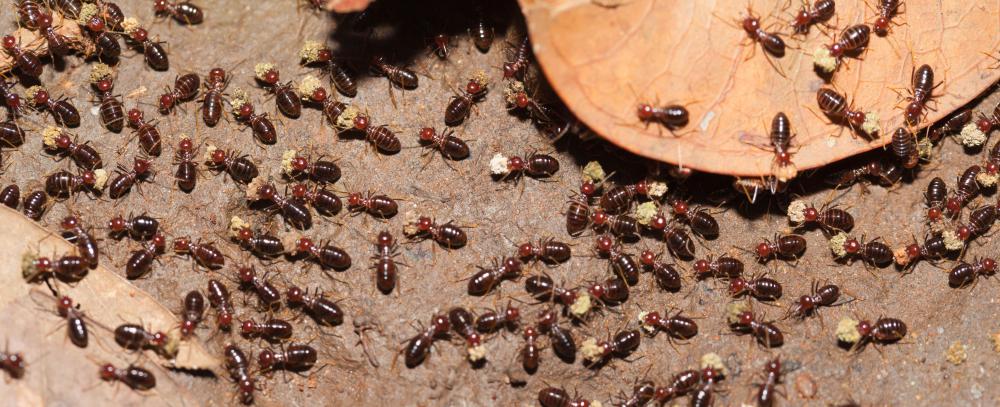What are Boring Insects?
 Mary McMahon
Mary McMahon
Boring insects are insects which like to bore holes into wood, bark, woody steams, leaves, and other parts of trees, shrubs, and plants. They can be a serious problem in the garden and around the home, and they are found in every corner of the world, with hundreds of common boring insect species infecting everything from grape roots to books. Once these members of the insect world settle in, they can be very difficult to dislodge, making prevention of infestations a priority for people who want to avoid damage caused by these insects.
Some boring insects actively feed on the materials they eat into, while others bore holes to live, or to lay eggs. Adult insects and larvae may both engage in boring activities, and as boring insects settle in and begin breeding, they can create a population which will keep growing with every breeding cycle, causing the damage to spread very rapidly. In some cases, the damage is hard to spot or invisible because it occurs below the surface, while other insects leave obvious traces of their presence.

Some species are attracted to trees and plants which are already sick or diseased. These insects take advantage of the weakened state of the plant, and may hasten the damage along, making it difficult for the plant to recover. Others colonize plants and trees which are perfectly healthy. Signs of a boring insect infestation include yellowing and drooping of leaves, pitting and scarring on trunks and branches, thick secretions from the plant caused by burrowing deep into the plant, or obvious signs of insect activity on the plant.

In addition to colonizing living trees and plants, boring insects will also attack wood and wood products such as books, fences, decks, and houses. This type of damage can sometimes be very difficult to spot from the surface. Over time, the pests cause a softening and collapse, and in the meantime, they spread to other potential sources of food or nesting material in the area.
Some examples of boring insects include termites, powder post beetles, longhorn beetles, carpenter ants, and Asian longhorn beetles. Controlling these pests involves keeping homes and gardens as clean as possible, discarding or sequestering dead organic material such as pruned tree branches, and monitoring vulnerable wood, trees, and plants for early signs of infestation. If insects do settle in, the infected material should be removed and carefully discarded to discourage a spread to other areas.
AS FEATURED ON:
AS FEATURED ON:












Discussion Comments
One of my favorite kinds of boring insect is the scale insect that lives in the beech forests of the South Island of New Zealand. We learned about it when we were on vacation there.
They bore into the tree so they can drink the sap, and then they secrete a sugary substance outside the tree.
The whole forest ecology is based around that sugary substance, as even the birds will eat it.
I just think that's kind of cool.
It's a better kind of wood insect than a termite anyway!
Termites are an absolute pain if they get into a building. They are really difficult to get rid of.
If you are going to build a new building and you know that they can be a problem, you should try to make sure you use prevention, rather than trying to get rid of them later.
There are all kinds of techniques to make sure you don't get termites now. You can get materials that have been poisoned against them, for example.
Or, if you don't like that idea, you can just make the cladding from materials they can't chew into, although you'll have to be sure they can't get into the wood underneath.
Honestly, the amount of money they will cost you is so much more than spending a little extra in the beginning to prevent them from ever moving in.
We've got some wood boring insects in my rented house. I've pointed them out to the landlord, but she hasn't done anything about them yet.
I know they are live and still doing damage, because we can see bits of sawdust hanging underneath the holes.
I'm not sure what kind of measures need to be taken in order to control them, but I hope it doesn't mean we'll have to leave the house or anything like that. I know they need to do something about it though. I don't really fancy having it collapse on us!
Post your comments